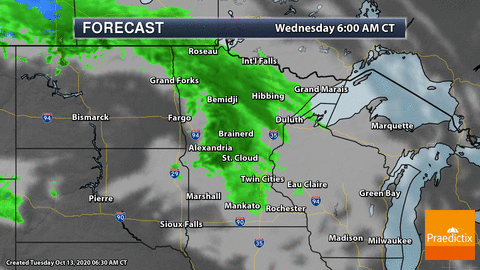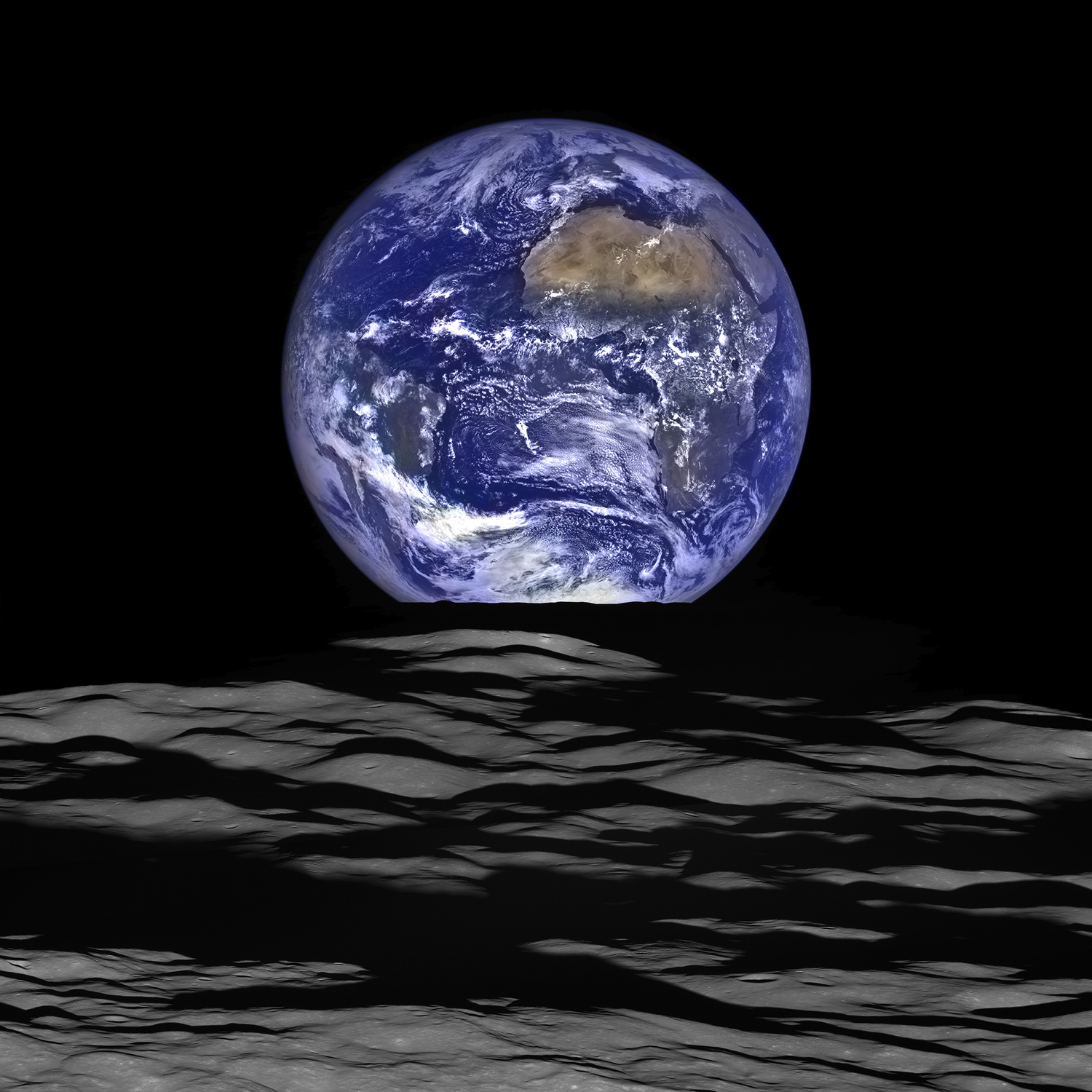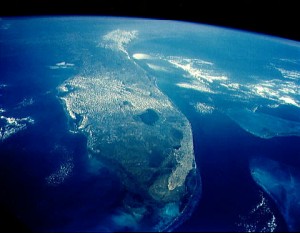Adaptability Is A Key 2020 Coping Skill
“Man plans, God laughs” a Yiddish proverb insists. Yep. Making plans is so 2019. Plan B? More like Plan Z. All of us are scrambling, improvising – doing what we can to keep things going.
As an entrepreneur I’ve discovered (the hard way) that the individuals and companies who succeed over time aren’t necessarily smarter. But they are more resilient, willing and ready to pivot. Flexibility is key; being able to adapt to any new environment. Easier said than done, but all of us are making it up as we go.
The Minnesota DNR confirms no correlation between autumn cold and snow, and the winters that follow. NOAA predicts an 85 percent chance a La Nina cool phase in the Pacific lingers into winter. Many La Ninas bring more snow, but I wouldn’t count on that just yet.
Showers today mark the leading edge of a real cold front. I see a late-week freeze, with a slight chance of slush in the metro; maybe a few inches of winter fun up north. Long range weather models hint at a few 60s late month.
A Halloween thaw?
Photo credit: Paul Douglas.
Does Snow in October Mean We’re In For a Rough Winter? The short answer is no. And The Minnesota DNR has the data to back that up: “…So, do early snows tell us anything about the coming winter? In short, no. It appears that an October snow is just an October snow, and has no bearing on the remainder of winter. From 1884 through 2019, 45 out of 136 Octobers in the Twin Cities have seen at least one day with measurable snow. The winters that followed those instances of snowfall have spanned nearly the entire spectrum of possibilities: dry, wet, snowy, cold, warm, and of course, average. In northern Minnesota, where October snows occur most years, the range of winter conditions after those snows is even wider. Even a persistently snowy autumn cannot promise us a brutal remainder of winter…”
Graphic credit: Minnesota DNR.
85% Chance La Nina Lingers Through Winter. NOAA’s Climate.gov has an update; here’s an excerpt: “…The altered atmospheric circulation of ENSO affects global weather (here’s how that works in general and La Niña in specific). Since ENSO can be predicted months ahead of time, a lot of research has gone into understanding the patterns of ENSO’s global weather impacts. The idea is that if we can predict ENSO, we can get an early picture of what global weather could look like months into the future. A recent study by some of our colleagues at the International Research Institute for Climate and Society (IRI), led by Nathan Lenssen, carefully re-assessed global precipitation (rain, snow, etc.) patterns during ENSO events. They looked at La Niña and El Niño impacts separately, because the impacts are not always opposite. Meaning, although El Niño may be related to a wet winter in one location, La Niña doesn’t necessarily mean a dry winter in that location…”

Reality Check. The sun is as high in the sky now as it was in late February, so no, I’m not terribly shocked that we’re in for a run of 40-degree highs. A hard freeze is possible, even in the MSP metro, by the weekend. MSP Meteogram: WeatherBell.
No More Snow Days After Covid-19? These Schools Used Online Learning to Cancel Them. USA TODAY has the post; here’s an excerpt: “…Since students could work online, snow days at Bancroft-Rosalie were already a thing of the past when the pandemic struck. Other districts, including New York City schools, have canceled snow days or are looking into doing away with them because of the prevalence of online schooling. New York leaders said abolishing snow days will help the district fit in as many instructional days as possible. “When we first started doing it, people weren’t interested in having remote learning during snow days. They thought that was a day kids should have off. People are going to rethink how you can use remote learning now in schools,” Cerny said...”
Graphic credit: Minnesota DNR and State Climate Office.
Tropical Storms Can Sometimes “Supercharge” the Hurricanes That Follow. Here’s an excerpt from a new study highlighted at National Geographic: “…But new science shows that Gordon’s effects, in conjunction with a heat wave over the region in its wake, helped Michael intensify into the strongest storm ever to make landfall in the Florida Panhandle. The scenario “supercharged the ocean battery” that powered the very intense hurricane, says Dzwonkowski. Tropical cyclones feed on hot ocean waters. Warm water acts as storehouse of energy that storms can draw on, like a battery: the hotter the water, or the more of it there is, the more energy can be transferred into the air above. Cold water, in contrast, can drain energy from a storm…”
October 9, 2018 file image of Hurricane Michael: AerisWeather.
Wildfire Smoke Travels Far But Never Really Disappears. Popular Science has an interesting post with data I wasn’t aware of – here’s an excerpt: “…Just as local weather impacts smoke movement, so too can smoke change local weather patterns, says Clements. When smoke shades the incoming rays of light, the temperature differential between the shaded and unshaded portions of air can create a “density current” in which air flows from areas of high to low pressure, often in the opposite direction of the prevailing wind. These currents can carry smoke particles far from the origin of the fire. This “smoke shading” can also suppress ambient wind. A warm and sunny day spurs convection currents, Clements explains. “Eddies and thermals form, which makes the atmosphere more turbulent at the surface,” he says...”
Image credit: “A massive cloud of smoke on September 9, 2020.” NASA Earth Observatory.

Fifth of Countries at Risk of Ecosystem Collapse, Analysis Finds. The Guardian has a sobering analysis: “One-fifth of the world’s countries are at risk of their ecosystems collapsing because of the destruction of wildlife and their habitats, according to an analysis by the insurance firm Swiss Re. Natural “services” such as food, clean water and air, and flood protection have already been damaged by human activity. More than half of global GDP – $42tn (£32tn) – depends on high-functioning biodiversity, according to the report, but the risk of tipping points is growing. Countries including Australia, Israel and South Africa rank near the top of Swiss Re’s index of risk to biodiversity and ecosystem services, with India, Spain and Belgium also highlighted…”
File image: NASA.
America Needs a Modern Electric Grid. There are more sustainable, ultimately cheaper ways to keep the lights on. What worked in the 1970s may not work so well in the 2030s. Niskanen Center has an update; here’s an excerpt: “…The electric system we could have, aside from being advanced, efficient, clean and reliable, will also be cost effective. In fact, it would be cheaper than the one we have. Unreliable power is expensive power. According to the Energy Information Administration, 46 percent of the outages in 2019 resulted from transmission failures. Because our outdated grid cannot withstand extreme weather events, industries and businesses need expensive back-up power, that bill is ultimately footed by consumers. Consumers are also paying for expensive wholesale power simply because we lack the necessary transmission to access more affordable power from other regions…”
Map credit: FEMA.
Electric Cars Are Cheaper to Own – Consumer Reports Agrees With Us. Here’s an excerpt from a post at CleanTechnica that caught my eye: “…Also, whereas I have to couch my analyses in paragraphs of disclaimers and notes about assumptions and disclaimers about notes about assumptions or else I’ll get chewed out by people who think I’m being too friendly to electric vehicles, Consumer Reports just blurted it out with almost no nuance in the very beginning of its press release:“Owning a plug-in electric vehicle today will save consumers thousands of dollars compared to owning a gas-powered vehicle, according to a new analysis by Consumer Reports comparing electrics to CR’s top-rated vehicles, as well as the best-selling, most efficient, and best-performing gas-powered vehicles on the market.”There actually are important caveats and assumptions you have to pay attention to. There are big differences from individual to individual on key factors influencing the results, such as total miles driven per year…”
Illustration credit: CleanTechnica.
Canada Will Ban Single-Use Plastic Items by the End of Next Year. CNN.com reports: “Travelers to Canada should not expect to see some everyday plastic items starting next year. The country plans to ban single-use plastics — checkout bags, straws, stir sticks, six-pack rings, cutlery and even foodware made from hard-to-recycle plastics — nationwide by the end of 2021. The move is part of a larger effort by the nation to achieve zero plastic waste by 2030. “Plastic pollution threatens our natural environment. It fills our rivers or lakes, and most particularly our oceans, choking the wildlife that live there,” Canadian Environment Minister Jonathan Wilkinson said Wednesday in a news conference. “Canadians see the impact that pollution has from coast to coast to coast...”
World’s Most Expensive Butt-Dial? Futurism has the unlikely story: “Florida physician Ali Vaziri accidentally “butt-dialed” himself into a $4,200 “Enhanced Autopilot” upgrade for his Tesla Model 3, CNBC reports — and he’s still waiting for a refund. “My phone was in my jeans,” Vaziri told CNBC. “I took it out, put it on this charger that comes with your Tesla and that’s it. A minute later? I got the text. I’ve never purchased anything through the Tesla app before…”
File image above: Tesla.
Flight to Nowhere Sells Out in 10 Minutes. Don’t laugh – people are so hungry to travel during a pandemic they’ll cough up good money to go…nowhere. Oddee.com has the story; here are a few snippets: “…Australian airline Qantas had a brilliantly stupid idea. As a company they naturally like money, and because their planes could fly nowhere, why not sell a flight precisely there? Despite how ridiculous it sounds, in mid-September Qantas started offering the Great Southern Land scenic flight. The flight takes off from the Sydney Domestic airport and – seven hours later – lands back in the same place. When the tickets went on sale in September, the whole plane sold out in less than ten minutes. “It’s probably the fastest selling flight in Qantas history...”
63 F. high in the Twin Cities on Tuesday.
60 F. average high on October 14.
45 F. high on October 14, 2019.
October 14, 1966: An enormous hailstone crashes through the windshield of a truck near Claremont in Dodge County. It was reported to be 16 inches in circumference.
WEDNESDAY: Windy with showers. Winds: W 15-35. High: 64
THURSDAY: Mostly cloudy with a colder wind. Winds: NW 15-25. Wake-up: 37. High: 47
FRIDAY: Chilly. Passing sprinkle or flurry. Winds: W 8-13. Wake-up: 34. High: 45
SATURDAY: Unsettled with a passing shower. Winds: NW 15-25. Wake-up: 38. High: 53
SUNDAY: Sunny start. Cold rain late. Slushy up north? Winds: E 5-10. Wake-up: 32. High: 47
MONDAY: Mostly cloudy, jackets linger. Winds: NE 10-15. Wake-up: 35. High: 48
TUESDAY: Gray with showery rains possible. Winds: NE 8-13. Wake-up: 37. High: 46
Photo credit from Pequot Lakes: Pete Schenck.
Climate Stories…
“Uninhabitable Hell”. Climate Change and Disease Threatens Millions. Here’s the intro to a story at Thomson Reuters Foundation: “A jump in climate-related disasters this century, along with the global coronavirus pandemic, show political and business leaders are failing to stop the planet turning into “an uninhabitable hell” for millions, the United Nations said on Monday. The last two decades saw the number of disasters caused by extreme weather nearly double to 6,681, up from 3,656 between 1980 and 1999, according to a report issued ahead of the International Day for Disaster Risk Reduction on Oct. 13. Worsening floods and storms accounted for about four-fifths of the total from 2000-2019 but major increases were also recorded for droughts, wildfires and heatwaves…”
File image: NOAA.
“Staggering” Rise in Climate Emergencies in Last 20 Years, New Disaster Research Shows. UN News has more perspective: “…According to the UNDRR report – produced with Belgium’s Centre for Research on the Epidemiology of Disasters at UCLouvain – there were 7,348 recorded disaster events worldwide, during the last two decades. Approximately 1.23 million people died – approximately 60,000 per year – with more than four billion affected in total; many more than once. These two decades of disaster also caused $2.97 trillion in losses to the global economy, with data also indicating that poorer nations experienced deaths rates more than four times higher than richer nations. By comparison, the previous 20-year period (1980 to 1999) saw 4,212 reported disasters from natural hazards, with 1.19 million deaths, more than three billion people affected and economic losses totalling $ 1.63 trillion...”

Climate Change: Better Warning Systems Needed for Extreme Weather. BBC News reports: “A new UN report says the world needs to rapidly raise investment in early warning systems for extreme weather events. Over the past 50 years, recorded disasters have increased five-fold, thanks in part to climate change. The study warns that one in three people on Earth are not adequately covered by warning systems. The numbers of people in need after natural disasters could increase by 50% over the next decade. Over the past 50 years, it says, some 11,000 disasters involving weather, climate and water-related hazards have occurred claiming two million lives and causing more than $3.5 trillion in economic losses…
Global Climate Inequality, In One Chart. Here’s an excerpt from a Quartz post: “…But tallying the damages obscures the fact that in low-income countries, a much greater portion of GDP is at stake. In other words, even a relatively low-cost storm can send disproportionate shockwaves through the economy. That’s one conclusion from a new United Nations report on the economic and human toll of disasters over the last two decades. Although total damages rise in wealthier countries, the overall loss of GDP is highest in poorer countries. The report also concludes that frequency, cost, and fatality of storms are all on the rise, which means these disparities are only likely to increase…”
Polar Ice, Atmospheric Water Vapor Biggest Drivers of Variation Among Climate Models. Overall climate models are fairly similar in predicting future scenarios. ScienceDaily highlights new research that explains many of the discrepencies in model results: “…A Florida State University researcher is part of a team that has found varying projections on global warming trends put forth by climate change scientists can be explained by differing models’ predictions regarding ice loss and atmospheric water vapor. The work will help climate scientists reconcile various models to improve their accuracy, said Florida State University Meteorology Professor Ming Cai, one of the authors of the study published in Nature Communications . Climate scientists agree that the Earth’s surface temperature is warming, but the details of exactly where and by how much are less clear...”
File image: NASA.

Florida Sees Signal of a Climate-Driven Housing Crisis. The New York Times (paywall) reports: “If rising seas cause America’s coastal housing market to dive — or, as many economists warn, when — the beginning might look a little like what’s happening in the tiny town of Bal Harbour, a glittering community on the northernmost tip of Miami Beach. With single-family homes selling for an average of $3.6 million, Bal Harbour epitomizes high-end Florida waterfront property. But around 2013, something started to change: The annual number of homes sales began to drop — tumbling by half by 2018 — a sign that fewer people wanted to buy. Prices eventually followed, falling 7.6 percent from 2016 to 2020, according to data from Zillow, the real estate data company. All across Florida’s low-lying areas, it’s a similar story, according to research published Monday...”
Graphic credit: “High-risk areas reflect Census tracts where 70 percent or more of developed land would be inundated if sea levels rose six feet. In low-risk areas, less than 10 percent of developed land would be inundated. Baseline average includes sales and prices between 2001 to 2012.” Source: Keys and Mulder, National Bureau of Economic Research
A Farewell to Ice Fishing? Climate Change Leads to Less Lake Ice. WBUR.com has a story applicable to New England, with implications for ice fishing across all norther-tier U.S. states: “…Lost lake ice can have far-reaching ecological, cultural and economic impacts. Winter recreation activities like ice fishing derbies and ice festivals are an economic boon for many lake communities, for instance, and lakes without ice have more waves through the winter, leading to shoreline erosion. Lakes are also warmer in years without ice cover, making them more prone to toxic algae blooms that can harm fish, pets and people. Filazzola said the trend toward less lake ice will likely continue. “Even an extreme reduction of carbon emission won’t return us back to pre-1940s conditions,” he said…”
Lake Minnetonka file photo: Paul Douglas.
Why Climate Change is a Time Bomb. Here’s a clip from a post at Axios: “…Because CO2 warms the atmosphere for decades to centuries, there’s a built in time delay to the physics of climate change that in turn reinforces political obstacles to action. When we pay to reduce carbon emissions now, the full effects aren’t felt until the future, which means the present generation has to sacrifice to help save the next ones. The authors admit climate change will have major costs that are difficult to fit into an economic model, like widespread biodiversity loss, while cutting carbon emissions could have more immediate co-benefits beyond climate change, like reducing toxic levels of air pollution. The bottom line: There are many reasons why climate change is considered a wicked problem, but its time delay is one of the wickedest...”
File photo: Climate Reality.




